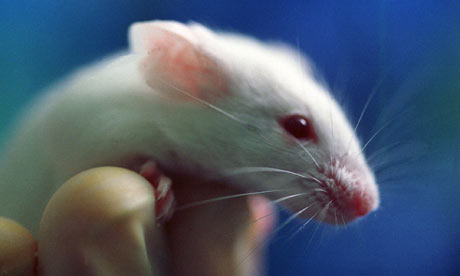Cured Blind Mice, See How They Run!!
There is new hope today for sufferers of degenerative eye diseases with the news that scientists in the UK have successfully restored the sight of "night blind" mice. Night Blindness or nyctalopia is a condition where sufferers find it difficult to see in low levels of light. The most common cause of night blindness is retinitis pigmentosa, a disorder in which the rod cells in the retina, gradually losing their ability to respond to the light.
The researchers from the University College London successfully injected immature "rod cells" from healthy mice in to the retina of night blind mice. Rod cells are a type of photoreceptor cells in our eyes which detect low levels of light and are almost solely responsible for seeing in the dark. (The other type of photoreceptor cells are called cones are responsible for colour vision in the eye. The scientists have found it difficult to successfully transfer cone cells to the eyes of blind mice.) After a period of four to six weeks a small percentage of the cells had made the connections needed to transmit visual messages to the brain.
To test to see if the experiment had worked, the researchers placed the mice in a dimly lit maze. The "cured" mice were able to find their way to a raised platform, using visual clues, more quickly than the untreated mice.
As mentioned previously, the loss of photoreceptors cells like rods and cones leads to diseases including age-related macular degeneration (AMD), retinitis pigmentosa and diabetes-related blindness. The scientists believe that the process could be used to treat humans in the coming years but will need to carry out more tests, using photoreceptors cells derived from embryonic stem cells, before starting human trials. However, the results are being seen as one of the most significant breakthroughs in the fight against degenerative eye diseases. Watch this space!
To find out more about how the eye works click here or watch the animated video below. Full details of the study are published in the journal Nature.

